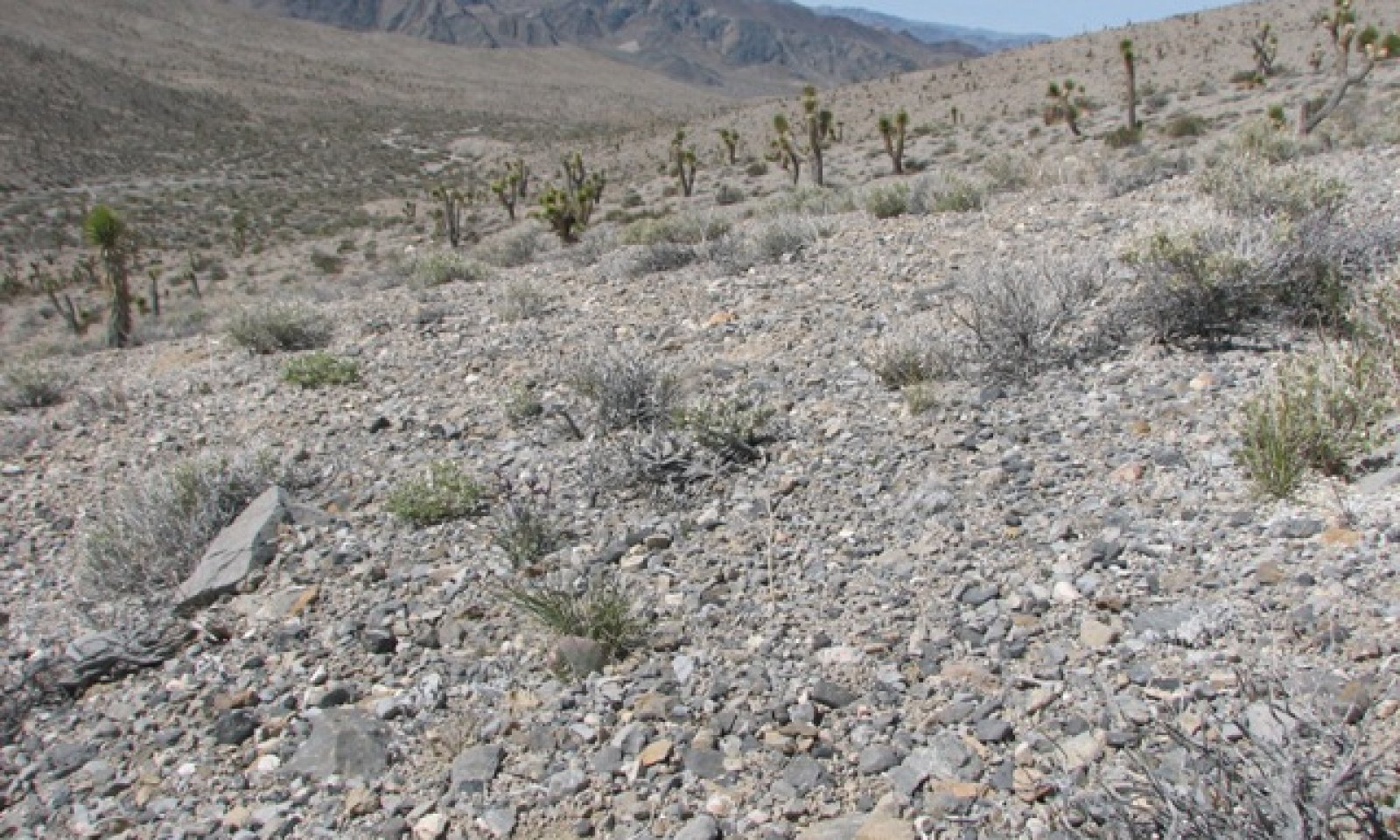
LOAMY HILL 5-7 P.Z.
Scenario model
Current ecosystem state
Select a state
Management practices/drivers
Select a transition or restoration pathway
- Transition T1 More details
- Transition T2 More details
- Restoration pathway R3 More details
-
No transition or restoration pathway between the selected states has been described
Target ecosystem state
Select a state
Description
The reference state is representative of the natural range of variability under pristine conditions. Community phase changes are primarily driven by long-term drought and infrequent wildfire. Wildfire is infrequent due to low fuel loading and widely spaced shrubs, resulting in long-lived stable shadscale plant communities. Timing of disturbance combined with weather events determines plant community dynamics.
Submodel
Description
The invaded state is characterized by the presence of non-native species in the understory. Non-native annuals such as red brome, Mediterranean grass, and redstem filaree have invaded the reference plant community and have become a dominant component of the herbaceous cover. A biotic threshold is crossed with the introduction of non-natives that cannot be easily removed from the system and have the potential to significantly alter disturbance regimes from their historic range of variability.
These non-natives are highly flammable and promote wildfires where fires historically have been infrequent. Shadscale persists after this invasion, however shrub seedlings and native forbs have limited competitive ability against non-native annuals.
Submodel
Description
The eroded state is characterized by reduced cover of perennial vegetation which leads to an increase in bare ground, leading to higher levels erosion and decreased infiltration rates. Feedbacks keeping this state stable include reduced perennial vegetative cover causing increased runoff, decreased infiltration and reduced run-on moisture preventing establishment of desirable perennial vegetation.
Submodel
Mechanism
Introduction of non-natives due to a combination of factors including: 1) surface disturbances, 2) changes in the kinds of animals and their grazing patterns, 3) drought and/or 4) changes in fire history.
Mechanism
Possible restoration techniques, to stabilize the site and reestablish native perennials, include flattening and terracing hill slopes, closing roads, vertical, horizontal and rock mulching, as well as, planting container stock. Non-native species remain in the plant community.
Model keys
Briefcase
Add ecological sites and Major Land Resource Areas to your briefcase by clicking on the briefcase (![]() ) icon wherever it occurs. Drag and drop items to reorder. Cookies are used to store briefcase items between browsing sessions. Because of this, the number of items that can be added to your briefcase is limited, and briefcase items added on one device and browser cannot be accessed from another device or browser. Users who do not wish to place cookies on their devices should not use the briefcase tool. Briefcase cookies serve no other purpose than described here and are deleted whenever browsing history is cleared.
) icon wherever it occurs. Drag and drop items to reorder. Cookies are used to store briefcase items between browsing sessions. Because of this, the number of items that can be added to your briefcase is limited, and briefcase items added on one device and browser cannot be accessed from another device or browser. Users who do not wish to place cookies on their devices should not use the briefcase tool. Briefcase cookies serve no other purpose than described here and are deleted whenever browsing history is cleared.
Ecological sites
Major Land Resource Areas
The Ecosystem Dynamics Interpretive Tool is an information system framework developed by the USDA-ARS Jornada Experimental Range, USDA Natural Resources Conservation Service, and New Mexico State University.
